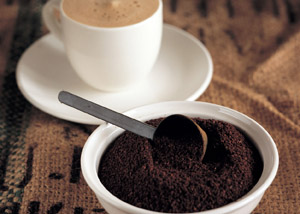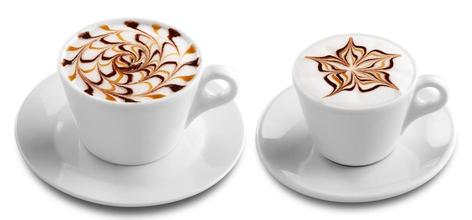Flavor and taste of boutique coffee beans in El Salvador, South America the characteristics of Mercedes Manor
This coffee has a strong fruity flavor, from dry land, raisins, melons, dried bananas, malt syrup and wild honey to a hint of tobacco. We can feel a very strong, rustic syrup aroma, rich spice flavor, with the feeling of sweet wine when it is deep baked. This must not be like the washed Salvadoran coffee you've tasted before! The cup test guarantees: strong fruit flavor, thick texture, simple sweetness, taste like sugar grains. I would like to use a harsher word: is this a bit too much? This word seems to be more appropriate. Ripe melon, dried banana, peach and mango flavor, this is like a fruit treasure pot. The sweetness is obvious, ending with a rustic flavor and a chicory aftertaste. The deep baking revolves around the taste of semi-sweet chocolate, accompanied by the complex flavors of a variety of fruits, but it provides more background than highlighting one flavor. With low acidity, a typical Salvadoran flavor shifts to the overall bass range. I found that this coffee can be roasted in a wide range of roasting levels according to personal preferences. Shallow baking can better reflect the fruit flavor. If you like natural coffee, you can't be mistaken about the degree of roasting. The other is the sun-baked beans launched by SM in the United States, which have never been seen before in the American continent. This is the first time you have the honor to touch this coffee. The expectation is self-evident.
SWEET MARIA of the United States has some information about tanning El Salvador: this coffee is part of our transparent pricing program for direct farm trade. This is sun-tanned coffee from a coffee producing area that originally used water washing. We used to have natural Salvadoran coffee, but I still have reservations about the use of tanning in this area, because this area may not have ideal weather conditions for tanning. Harald is ideal for tanning, as is Yemen, but El Salvador? Sun drying requires picking ripe red coffee fruit, then removing the skin and letting the flesh ferment off (or simply peel off by machine), and the whole red coffee fruit is laid out and dried. This batch of coffee beans is processed at the FINCA EL MANZANO processing plant and gets the whole coffee "cake" in a reasonable time, and they follow the drying work as the beans roll in the GUARDIOLA coffee dryer. You can see the brown dried coffee pods in the picture, and the coffee in these pictures is the batch of coffee beans taken in February this year. As a result, they produced a good batch of natural coffee beans with fruit and wild flavor, without any mildew and steaming flavor. If you haven't tried it, the difference between sunbathing and water washing is still quite dramatic. now good coffee beans continue to enter the country, and coffee lovers can find beans all over the world through the Internet. Two more coffees from El Salvador, a small South American country, were baked this week. One is the famous Pacamara species: Pacamara Coffee is a hybrid of Pacas Pacas (a sudden variant of the bourbon species) and giant bean Maragogype (a sudden variant of the tin card species found in Brazil) found in El Salvador in the 1950s. The taste is mellow, and it is the target pursued by boutique coffee fans.

Important Notice :
前街咖啡 FrontStreet Coffee has moved to new addredd:
FrontStreet Coffee Address: 315,Donghua East Road,GuangZhou
Tel:020 38364473
- Prev

Nicaraguan Coffee Flavor taste Manor characteristics of Los Congo Manor introduction to Nicaragua
Because the tannic acid in Nicaraguan coffee is easy to change during cooling, and the taste becomes sour, which will affect the flavor of the coffee. You can add the right amount of sugar, and then add cream. Enjoy a cup of high-quality Nicaraguan coffee, you can not only experience the different levels of coffee taste, but also help to improve the ability to appreciate coffee. Coffee is the master of Nicaragua.
- Next

An introduction to the flavor and taste of Nicaraguan coffee manor
Nicaragua is located in central Central America, bordered by the Pacific Ocean to the west and the Caribbean Sea to the east. The highlands in the north and the coastal plains in the east are part of the Central American volcanic belt. The eastern plain is high-temperature and rainy, with a tropical maritime climate. The suitable climate provides an excellent growth environment for the cultivation of coffee. High-quality Nicaraguan coffee, grown in the north and middle of the country. Coffee is Ni.
Related
- Does Rose Summer choose Blue, Green or Red? Detailed explanation of Rose Summer Coffee plots and Classification in Panamanian Jade Manor
- What is the difference between the origin, producing area, processing plant, cooperative and manor of coffee beans?
- How fine does the espresso powder fit? how to grind the espresso?
- Sca coffee roasting degree color card coffee roasting degree 8 roasting color values what do you mean?
- The practice of lattes: how to make lattes at home
- Introduction to Indonesian Fine Coffee beans-- Java Coffee producing area of Indonesian Arabica Coffee
- How much will the flavor of light and medium roasted rose summer be expressed? What baking level is rose summer suitable for?
- Introduction to the characteristics of washing, sun-drying or wet-planing coffee commonly used in Mantenin, Indonesia
- Price characteristics of Arabica Coffee Bean Starbucks introduction to Manning Coffee Bean Taste producing area Variety Manor
- What is the authentic Yega flavor? What are the flavor characteristics of the really excellent Yejasuffi coffee beans?

